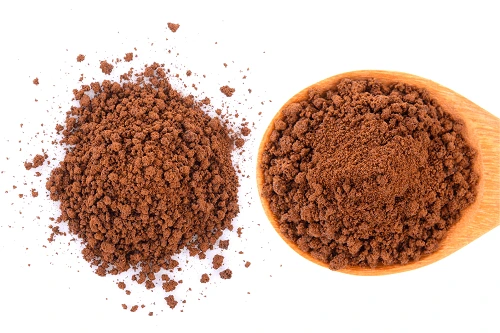Coffee
What is Instant Coffee
In a fast-paced world, convenience is key. This extends to our daily rituals, including our beloved cup of coffee. Instant coffee has gained popularity for its ease of preparation and quick brewing time. In this article, we will delve into the world of instant coffee, exploring what it is, how it is made, and some tips to enhance your instant coffee experience.
What is Instant Coffee?
It is, also known as soluble coffee, is a type of coffee that has been brewed and then dehydrated into a concentrated form. It is made by extracting the flavor from roasted coffee beans and then freeze-drying or spray-drying the liquid to remove the water content. The result is a fine powder or granules that can be easily dissolved in hot water, creating a cup of coffee in a matter of seconds.
The Process of Making Instant Coffee
- Harvesting and Roasting Coffee Beans: The process of making instant coffee begins with the selection and harvesting of coffee beans. Once the beans are harvested, they undergo a roasting process to bring out their unique flavors and aromas.
- Grinding the Coffee Beans: The roasted coffee beans are ground into a fine consistency. This allows for efficient extraction of the coffee flavor during the brewing process.
- Brewing the Coffee: The ground coffee is brewed using either hot water or steam. This extraction process involves passing water or steam through the coffee grounds, extracting the soluble compounds responsible for the coffee’s flavor.
- Dehydration: After the brewing process, the coffee liquid undergoes a dehydration process to remove the water content. There are two common methods used: freeze-drying and spray-drying.
- Freeze-Drying: In freeze-drying, the brewed coffee is frozen and then placed in a vacuum chamber. The frozen liquid is slowly heated, causing the ice to sublimate into water vapor. This leaves behind dehydrated coffee particles.
- Spray-Drying: Spray-drying involves spraying the brewed coffee as a fine mist into a hot air chamber. The hot air rapidly evaporates the water droplets, leaving behind dried coffee particles.
- Agglomeration: This process involves spraying the coffee extract as a fine mist into a heated chamber, where the particles stick together and form agglomerates. The resulting agglomerated instant coffee dissolves quickly and easily in hot water, producing a flavorful cup of coffee.
- Packaging: The dehydrated coffee particles are then packaged into jars, sachets, or other convenient forms for consumer use. This packaging ensures the coffee remains fresh and preserves its flavor until it is prepared.
Advantages and Disadvantages
It offers several advantages that make it a popular choice for coffee lovers:
- Convenience: Instant coffee provides a quick and hassle-free way to enjoy a cup of coffee. It requires minimal preparation time, making it ideal for busy individuals or those on the go.
- Long Shelf Life: Due to the dehydration process, instant coffee has a longer shelf life compared to freshly ground coffee beans. It can be stored for months without losing its flavor or aroma.
- Versatility: It can be used in various recipes, including desserts, iced coffees, and coffee-based beverages. Its versatility makes it a versatile ingredient in the culinary world.
However, there are some drawbacks to instant coffee:
- Less Aroma and Flavor Complexity: It may lack the complex flavors and aromas found in freshly brewed coffee. The dehydration process can lead to some loss of the coffee’s nuances.
- Lower Caffeine Content: It is generally contains less caffeine than freshly brewed coffee. This may be a disadvantage for those seeking a strong caffeine boost.
Tips to Enhance Your Instant Coffee
- Choose Quality Brands: Choose reputable brands that use high-quality coffee beans for their instant coffee. This ensures a better taste and aroma.
- Experiment with Ratios: Adjust the amount of instant coffee and water according to your preference. Some may prefer a stronger flavor, while others may enjoy a milder taste.
- Add Enhancements: Sprinkle a pinch of cinnamon, cocoa powder, or nutmeg to add depth to your instant coffee. You can also try flavored syrups or a dash of vanilla extract.
- Whisk or Froth: Use a whisk or a milk frother to create a frothy texture, similar to a latte or cappuccino. This enhances the overall experience of your instant coffee.
- Store Properly: To maintain the freshness of your instant coffee, store it in an airtight container in a cool, dark place. Avoid exposure to moisture, light, or strong odors.
Conclusion
It offers a convenient way to enjoy a cup of coffee without the need for extensive preparation. While it may lack the complexities of freshly brewed coffee, it provides a quick and accessible option for coffee lovers on the go. By following some simple tips and techniques, you can enhance the flavor and aroma of your instant coffee, elevating your coffee experience.
FAQs
1. Is it made from real coffee beans?
Yes, it is made from real coffee beans. The beans undergo a process of extraction and dehydration to create the soluble coffee granules or powder.
2. How much instant coffee should I use per cup?
The amount of instant coffee to use per cup depends on personal preference. Start with the recommended ratio on the packaging and adjust it according to your taste.
3. Can I use it in baking recipes?
Yes, it can be used in baking recipes to add a coffee flavor to cakes, cookies, and other desserts. It can also be dissolved in hot water to create a coffee syrup for drizzling over cakes.
4. Does it have the same caffeine content as regular coffee?
It is generally contains less caffeine than regular brewed coffee. However, the exact caffeine content can vary depending on the brand and serving size.
5. Can I make iced coffee using instant coffee?
Yes, it can be used to make iced coffee. Dissolve the instant coffee in a small amount of hot water, then pour it over ice and add milk or other desired ingredients.

